Organizing Committee Members - Polymer Science 2023

Thieo E. Hogen-Esch
Professor
University of Southern California
USA
Thieo E. Hogen-Esch(Biography)
Theo E. Hogen_Esch did his MSc. in Polymer Chemistry, at the University of Leiden, Netherlands, in 1961. He is holding his Ph.D. (Cum Laude) in Physical Organic Chemistry, from the University of Leiden, Netherlands, completed in 1967. Currently, he is working as a Professor in the Department of Organic and Polymer Chemistry at the University of Southern California.
Thieo E. Hogen-Esch(Research Area)
The Hogen-Esch group is focused on synthesizing polymers using advanced methods in all areas of polymer synthesis aimed at the fabrication of new materials with potential in energy and other materials science fields. Applications include fuel cell and ultrafiltration/reverse osmosis membranes and polymers reinforced with perfluorocarbon clusters. Current areas of interest include A. Non-thermodynamic self-assembled polymer blends with hydrophilic Nano-sized channels. B. Synthesis of blends polymers end-functionalized with perfluorocarbon (RF) groups for reverse osmosis and other applications.
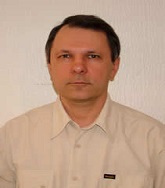
Igor F. Perepichka
Professor
Bangor University
United Kingdom
Igor F. Perepichka(Biography)
Igor F. Perepichka completed his Diploma in Chemical Engineering, with Distinction from Donetsk Technical University, Donetsk, Ukraine. In 1987 he did his Ph.D. in Organic Chemistry from the National Academy of Sciences of Ukraine. In 1999 he achieved the "Senior Research Fellow" rank (The highest Attestation Commission of Ukraine). Later he becomes the Professor of Chemistry, LCRI Chair; School of Chemistry, Bangor University, Bangor, UK.
Igor F. Perepichka(Research Area)
His research is focused on the design, synthesis, and studies of novel organic p-functional systems, from small molecules to conjugated polymeric materials, toward their applications in organic electronics, optoelectronics, and photonics.
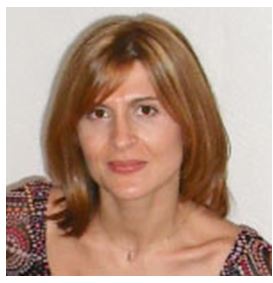
Lavinia Balan
CNRS Senior Researcher
Institute of Materials Science of Mulhouse
FRANCE
Lavinia Balan(Biography)
Lavinia BALAN obtained her Ph.D. from the University of Henry Poincaré in Nancy, France, in 2005. Her Ph.D. was devoted to elaborating an original material for the anode of Li-ion batteries. After a post-doctorate in Orleans and then in Mulhouse, she joined the Department of Photochemistry of Mulhouse in 2006 as a CNRS Senior Researcher. She opened a new field of research in this laboratory, viz. the photo-assisted synthesis of metal nanoparticles and metal-polymer nanocomposite.
Lavinia Balan(Research Area)
Balan research is concerned with the photochemical synthesis of metal/polymer nanocomposites and photo-design of metal nanoparticles and nanocrystals (quantum dots) suited for advanced applications in optic and photonics, plasmonics, imaging, or biology.
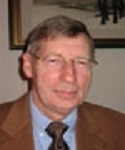
Gustaaf Schoukens
Professor
Ghent University
Belgium
Gustaaf Schoukens(Biography)
Prof.dr.ir. Gustaaf Schoukens is a professor of polymer technology at the Ghent University (Belgium), faculty of Engineering. He received his degree in Chemical Engineering from the K.U. Leuven (Belgium) in 1971 where he also obtained his Ph.D. in 1978. The subject of his Ph.D. research was “Non-linear viscoelastic behavior of dispersionsâ€Â. He worked as a senior researcher from 1978 till 2004 in the private industry (Solvay; Central Research Laboratory) in polymerization and polymer processing. In 1994 he obtained the part-time position of lecturer at Ghent University, teaching “polymer processingâ€Â. In 2004 he received the full-time position of professor at Ghent University teaching all courses concerning polymer technology, including processing and polymerization processes. He is also involved in the courses concerning “environment and sustainable development†in general and teaching the course on the “rational use of materials†in particular. Polymer technology in general and polymer processing, including synthetic and biopolymers, in particular, are the main leads in his research program and its publications. The main research topics are now the development of artificial turf for sports applications and the development of biopolymers based on chitin or chitosan with biomedical properties. More recent research is the study of nanostructures, especially nanoparticles obtained by reaction engineering. These nanoparticles are already used in large quantities for coating paper and paperboard. I am an expert in the production of monofilaments for artificial sports applications and founded ERCAT (European Research Centre for Artificial Turf).
Gustaaf Schoukens(Research Area)
Sustainable development and environmental technology Polymers Materials processing.
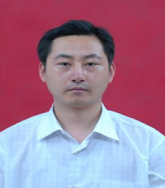
Jintao Zhu
Dean of Chemistry and Chemical Engineering
University of Science and Technology Wuhan
China
Jintao Zhu(Biography)
Jintao Zhu is a Professor at the School of Chemistry and Chemical Engineering, at Huazhong University of Science and Technology. He received his Ph.D. from the Changchun Institute of Applied Chemistry in 2005. After postdoctoral training at the University of Alberta in Canada and the University of Massachusetts Amherst in the USA, he joined the Huazhong University of Science and Technology in 2009. Professor Zhu has received several awards including China National Funds for Distinguished Young Scholar (2015), the Chinese Chemical Society Youth Award (2013, the New Century Excellent Talents of Chinese Ministry of Education (2009), and Distinguished Professor of Chutian Scholar of Hubei Province (2009).
Jintao Zhu(Research Area)
His research interests are microfluidics processing, biomaterials, supramolecular assembly, immune therapy, and responsive polymer materials.
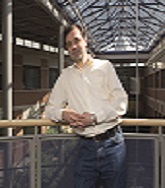
Roderick Melnik
Professor
Wilfrid Laurier
Canada
Roderick Melnik(Biography)
Roderick is a Professor in the Faculty of Science and Tier Canada Research Chair, Roderick Melnik is an applied mathematician and scientist with over 25 years of academic and industrial research experience. He is the director of the MS2Discovery Interdisciplinary Research Institute. Before his appointment in Canada, Melnik held full professorships in the U.S.A. and Denmark. In contrast, in the late 1990s, he held the position of senior mathematician at the Commonwealth Scientific and Industrial Research Organisation (CSIRO) in Sydney, Australia. He received his Ph.D. in Computational Mathematics and his MSc in Applied Mathematics from Kyiv State University in 1989 and 1985, respectively. Melnik has been a recipient of some awards, including prestigious fellowships in Italy, Denmark, England, and Spain. He has published over 300 refereed research contributions in applied mathematics, computational science, and mathematical modeling in sciences and technology. He serves on editorial boards and has been a guest editor of many international journals and book series. He is a member of such professional societies as SIAM, ASME, CAIMS, AustMS, and its ANZIAM Division. Roderick Melnik is head of the M2NeT Laboratory (Mathematical Modelling for New Technologies). It is affiliated with the University of Waterloo and the University of Guelph, as well as with the Guelph-Waterloo Institute of Physics.
Roderick Melnik(Research Area)
Polymer Science, Applied and computational mathematics with its enrichments in sciences and technologies; Partial differential equations and approximation theory; Non-smooth control, Mathematical biology, and complex dynamic systems.

Peter Foot
Emeritus Professor
Kingston university
United Kingdom
Peter Foot(Biography)
Peter Foot studied chemistry at the Universities of Southampton and Oxford. He worked for a time in the polymer industry. and later, at Brighton and Sussex Universities, he researched inorganic materials and organic polymers. His current interests are mainly in functional polymers and nanocomposites for energy conversion, organic optics & electronics, and drug delivery. He led the Materials Research Group at Kingston University (1995-2008) and was the Founding Director of the Materials Research Centre. He retired as a full-time Professor of Materials Science in 2014 and is now an Emeritus Professor. He currently supervises 3 Ph.D. students, having previously directed 57 postgrad research students and 9 postdoc researchers. His research has been widely funded by EPSRC, the Royal Society, industry, and government/European agencies.
Peter Foot(Research Area)
•Conducting polymers and polyblends (e.g. for sensors and actuators) •Organic and polymeric semiconductors and thin-film devices (OLED; FET) •Organic-inorganic nanocomposites, including photovoltaic (PV) properties and electronic energy transfer •High-energy battery materials (especially Li and Mg battery cathodes), and supercapacitors •Polymer nanoparticles for targeted delivery of potent or cardiotoxic drugs •Ophthalmic polymers (surface modification and novel polymer synthesis).